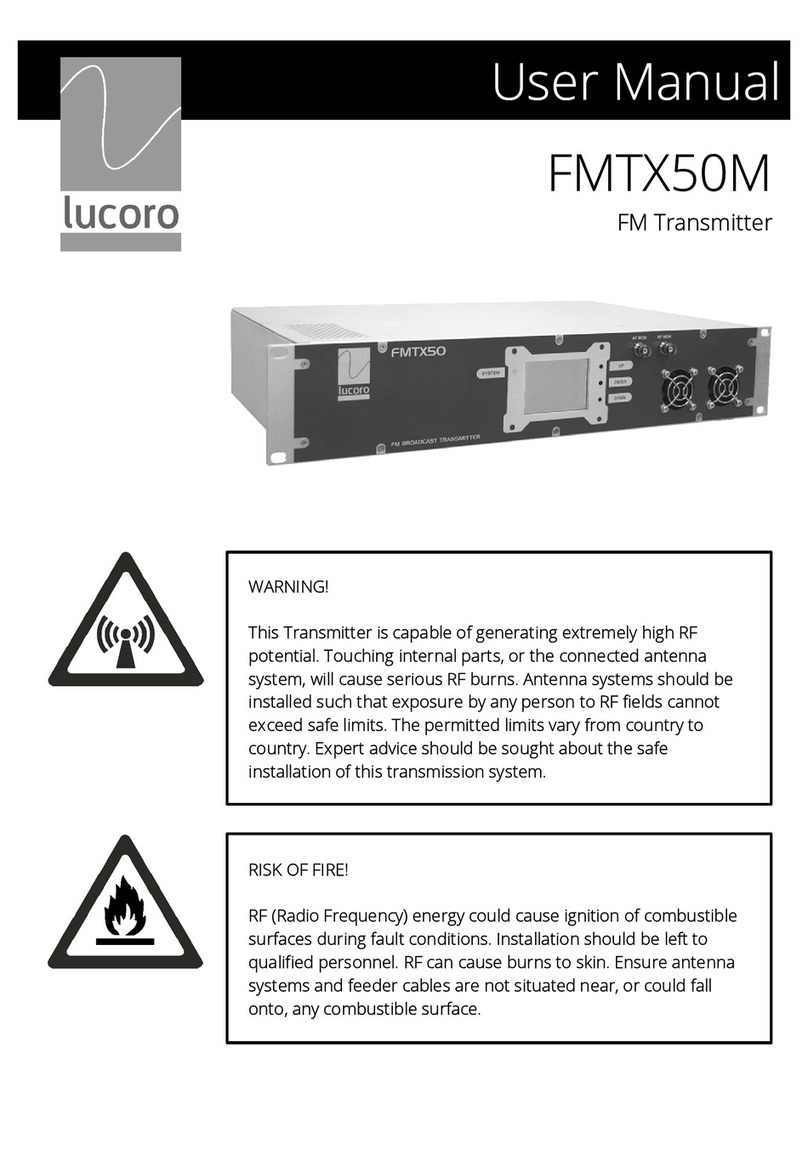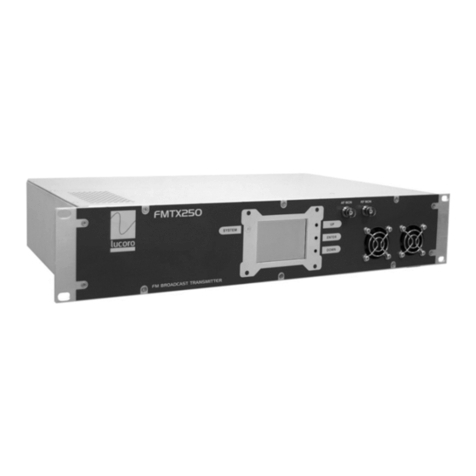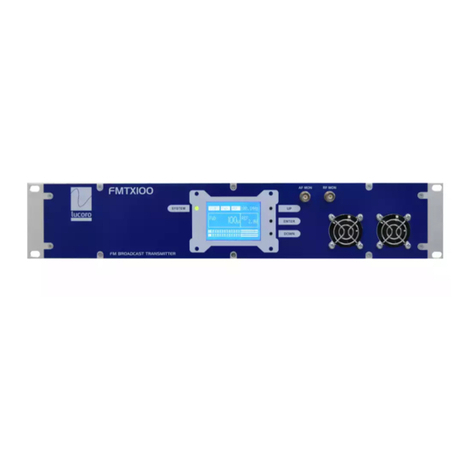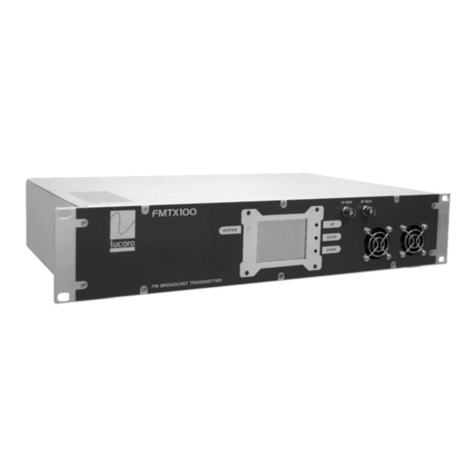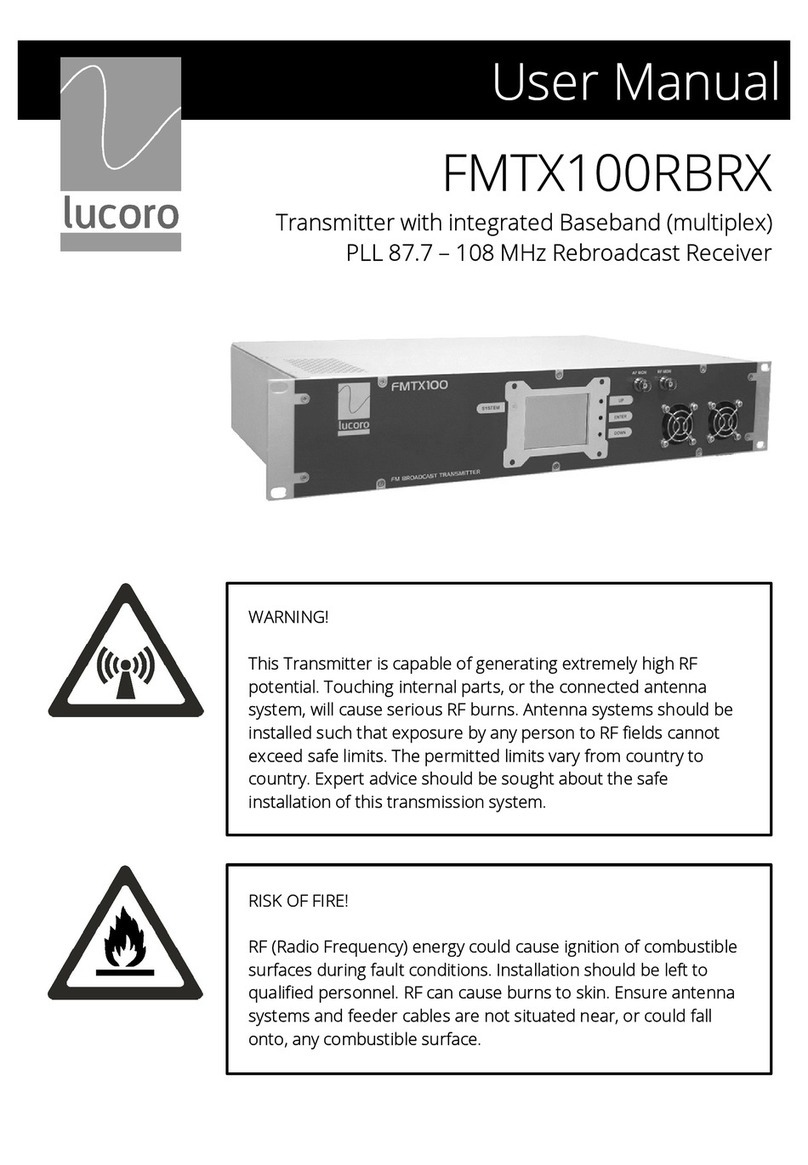
IMPORTANT!
IMPORTANT! IMPORTANT!
IMPORTANT!
Always reduce the RF Ou
Always reduce the RF OuAlways reduce the RF Ou
Always reduce the RF Out
tt
tput
put put
put power to minimum before changing
power to minimum before changing power to minimum before changing
power to minimum before changing
the transmission frequency. Once the new frequency is active,
the transmission frequency. Once the new frequency is active, the transmission frequency. Once the new frequency is active,
the transmission frequency. Once the new frequency is active,
slowly increase the RF output power control to provide the
slowly increase the RF output power control to provide the slowly increase the RF output power control to provide the
slowly increase the RF output power control to provide the
required power output level.
required power output level.required power output level.
required power output level.
ARNING!
ARNING! ARNING!
ARNING!
Never operate this device without a suitable 50 ohm load
Never operate this device without a suitable 50 ohm load Never operate this device without a suitable 50 ohm load
Never operate this device without a suitable 50 ohm load
connected to the RF OUTPUT socket, or without a suitabl
connected to the RF OUTPUT socket, or without a suitablconnected to the RF OUTPUT socket, or without a suitabl
connected to the RF OUTPUT socket, or without a suitably
y y
y
installed and matched
installed and matched installed and matched
installed and matched antenna
antennaantenna
antenna
system
systemsystem
system
connected
connectedconnected
connected. Although the
. Although the . Although the
. Although the
output of this transmitter is protected against antenna
output of this transmitter is protected against antenna output of this transmitter is protected against antenna
output of this transmitter is protected against antenna load
load load
load
faults
faultsfaults
faults, MIS
, MIS, MIS
, MIS-
--
-OPERATION MAY RESULT IN DAMAGE NOT COVERED
OPERATION MAY RESULT IN DAMAGE NOT COVERED OPERATION MAY RESULT IN DAMAGE NOT COVERED
OPERATION MAY RESULT IN DAMAGE NOT COVERED
BY ANY ARRANTY.
BY ANY ARRANTY.BY ANY ARRANTY.
BY ANY ARRANTY.
IMPORTANT!
IMPORTANT! IMPORTANT!
IMPORTANT!
Correct operation of the cooling fans in this product is vital to
Correct operation of the cooling fans in this product is vital to Correct operation of the cooling fans in this product is vital to
Correct operation of the cooling fans in this product is vital to
reliable
reliable reliable
reliable continu
continucontinu
continuous
ousous
ous
operation. Schedule
operation. Schedule operation. Schedule
operation. Schedule bi
bibi
bi-
--
-annual maintenance
annual maintenance annual maintenance
annual maintenance
checks. e strongly advise the use of a standby transmitter
checks. e strongly advise the use of a standby transmitter checks. e strongly advise the use of a standby transmitter
checks. e strongly advise the use of a standby transmitter
system for use during maintenance events or fault conditions
system for use during maintenance events or fault conditionssystem for use during maintenance events or fault conditions
system for use during maintenance events or fault conditions,
,,
,
to
to to
to
pre
prepre
prevent prolonged breaks in transmission.
vent prolonged breaks in transmission.vent prolonged breaks in transmission.
vent prolonged breaks in transmission.
IMPORTANT!
IMPORTANT! IMPORTANT!
IMPORTANT!
hen
henhen
hen
cycling the power off, then on, ensure that the tr
cycling the power off, then on, ensure that the trcycling the power off, then on, ensure that the tr
cycling the power off, then on, ensure that the transmitter
ansmitteransmitter
ansmitter
is off for at least 10 seconds before re
is off for at least 10 seconds before reis off for at least 10 seconds before re
is off for at least 10 seconds before re-
--
-applying power, to
applying power, to applying power, to
applying power, to allow
allowallow
allow
the internal circuits
the internal circuits the internal circuits
the internal circuits time
time time
time to
to to
to fully
fully fully
fully reset.
reset.reset.
reset.
Failure to do so may result
Failure to do so may result Failure to do so may result
Failure to do so may result
in
inin
in
no RF output (PLL failsafe
no RF output (PLL failsafeno RF output (PLL failsafe
no RF output (PLL failsafe
mode
modemode
mode).
).).
).
Consideration should be given to fitting a suitably rated UPS if
Consideration should be given to fitting a suitably rated UPS if Consideration should be given to fitting a suitably rated UPS if
Consideration should be given to fitting a suitably rated UPS if
power interruptions are likely. Similarly, telemetry reset of power
power interruptions are likely. Similarly, telemetry reset of power power interruptions are likely. Similarly, telemetry reset of power
power interruptions are likely. Similarly, telemetry reset of power
may be advisable for transmitters in remote areas, or having
may be advisable for transmitters in remote areas, or having may be advisable for transmitters in remote areas, or having
may be advisable for transmitters in remote areas, or having
restricted access arrangements.
restricted access arrangements.restricted access arrangements.
restricted access arrangements.
